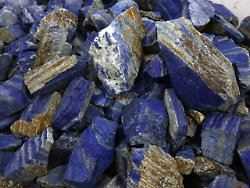Tuesday 17th August 2021
Ransom, mining, drugs
This is how the Taliban finance their campaign
The international troops in Afghanistan kept the Taliban out of power for 20 years. But even as a rebel militia, the terror group was able to fall back on considerable income from economic and criminal activities.
With power, equipment and capabilities surprising to many overseas observers, the Taliban are overrunning the parts of Afghanistan last held by the government and its allies. A decisive factor that enables the militia to advance in a coordinated manner across almost the entire country in the shortest possible time is their financial strength, which has grown in recent years. Even if even secret services can only estimate the exact income, reports from the UN and NATO give a picture of how the Islamists, ostracized as a terrorist organization in many countries, have financed themselves in recent years.
Especially since Mullah Jakub, son of Taliban founder Mullah Omar, was appointed deputy leader of the terrorist group and took over responsibility for its finances, the Taliban have significantly expanded their sources of income, according to a recent UN report. Its annual budget for 2019/2020 was estimated in a report for NATO from late last year at up to 1.6 billion US dollars.
The drug business is still probably the biggest source of income. About 80 percent of the heroin traded worldwide comes from Afghanistan. The Taliban not only have poppies grown in parts of their territory and tax the income. They are also involved in all other parts of the processing and value chain. They are said to have collected around 460 million US dollars in 2019/2020. Income may even have increased recently. According to the UN, the Afghan government’s efforts to combat drug cultivation have been declining for months. Business is likely to flourish more than ever.
Dispute over state support
The Taliban now generate roughly the same amount of income from mining. According to the responsible ministry in Kabul, the Taliban already controlled 280 of the more than 700 official mining areas in the country last year. The mined raw materials include coal, ores, marble and also rare earths and precious stones. Mining activities exploded in recent years after the internationally recognized government decided to issue official licenses for mining in Taliban areas. That brought the government urgently needed income – but so did the Taliban, who also taxed the companies.
In addition, the Taliban tax – or blackmail – all other companies that work in their territory. According to media reports, they blew up cell phone masts or power lines from operators who paid no or insufficient protection money. There are also “route taxes” levied by the militia on goods and people at checkpoints on important highways, as well as customs duties on imports and exports. The residents in the Taliban areas also have to pay the Islamic property tax Zakat of two percent to the group. Ransoms from kidnappings also make a significant contribution to revenue.
Another important contribution to the Taliban’s budget comes from abroad. Despite all the efforts of the US and other Western countries, large sums of donations are still flowing to the Taliban from wealthy individuals who sympathize with the Islamists and from supposedly non-profit organizations. The extent to which the warriors of God also receive state support from abroad is controversial. For many years, Pakistan and its military intelligence service ISI have played a central role in this. The Pakistani government vehemently denies this. For some time now, the US has also been accusing Russia of massively supporting the Taliban both financially and with military equipment. To a lesser extent, money is also said to have flowed to the Taliban from Iran.
.
